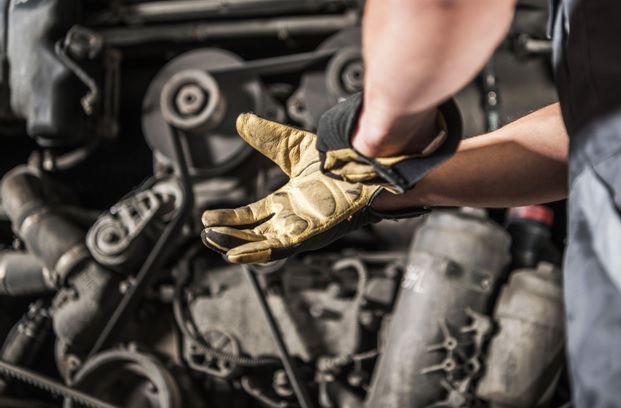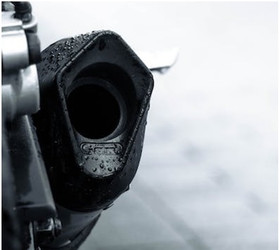Diesel engines, compared to gasoline engines, can be quieter and require less maintenance. They also offer fairly good fuel economy by comparison.
This makes diesel the fuel of choice for some passenger vehicles, as well as for most trucks and many trains and ships.
However, in order to achieve such good economy, diesel engines require a special “exhaust aftertreatment system” that not only purifies the exhaust stream by purging noxious, toxic compounds, but also ensures complete combustion of the hydrocarbons in the fuel.
This is a high-level view of how the system works.
Diesel DOC (Diesel Oxidation Catalyst)
Not all diesel engines have the same exact exhaust aftertreatment system, but for most engines, the first step along the way for the raw exhaust stream is a component known as a diesel DOC, or a diesel oxidation catalyst.
The diesel oxidation catalyst (DOC) is a device typically consisting of a chamber containing a honeycomb substrate which is either made of some ceramic or a stainless steel foil. This substrate contains “PGMs” or platinum group metals, such as platinum, palladium, or rhodium, which catalyze the reaction of compounds in the exhaust stream.
The unique honeycomb structure of the diesel DOC increases the surface area of the interior of the device through which the hot exhaust gases flow. As the exhaust stream passes through the DOC, they recombine into harmless compounds.
Chiefly, the purpose of the diesel DOC is to catalyze the reaction of toxic carbon monoxide (CO) and hydrocarbons like butane (C4H10), propane (C3H8), and methane (CH4) into harmless compounds - chiefly carbon dioxide (CO2) and water vapor (H2O).
The diesel DOC often requires an additional stream of oxygen to complete this oxidation reaction. Often, there is not enough oxygen remaining in the exhaust stream and additional air must be taken in, called “secondary air” which is taken in at the front of the catalyst.

SCR (Selective Catalytic Reduction)
In many aftertreatment systems, the next step in the process for the exhaust gas stream is the SCR, or selective catalytic reduction converter.
Right before entry into the SCR, a special fluid known as DEF, or diesel exhaust fluid, is injected into the exhaust stream. This fluid is urea-based and helps to purge the exhaust stream of nitrogen oxide (NOX) emissions.
Inside the SCR and under the influence of heat, the diesel exhaust fluid vaporizes and converts into both ammonia (NH3) and carbon dioxide. The SCR is considered “selective” because it only converts certain compounds - namely, the nitrogen oxides mentioned above - into harmless components, being mostly free nitrogen (N2) and water vapor, with a nominal amount of carbon dioxide.
Diesel DPF (Diesel Particulate Filter)
After passing through the diesel DOC and SCR, the exhaust stream has had significant amounts of nitrogen oxides, carbon monoxide, and hydrocarbons removed from it. However, hydrocarbons and particulate matter - soot and ash - still remain in the stream.
This leaves one critical step in the process - the passage of the diesel exhaust stream through a diesel DPF, or a diesel particulate filter, which oxidizes the remaining soot and hydrocarbons and traps some of the ash.
The ash is fairly non-reactive, but the soot that remains in the exhaust stream is important for two reasons. One is that it contains residual chemical potential energy that can be converted in the presence of oxygen and harnessed to improve the fuel economy of the engine. The other is that the remaining hydrocarbons and soot are dangerous pollutants that are harmful to both human health and the environment.
Like the diesel DOC, the DPF is a device that contains an internal “honeycombed” structure often made of a ceramic material that allows good permeability without substantial loss of system pressure.
As the exhaust stream flows through the DPF, the filter removes ash and soot, preventing them from being released into the atmosphere. This further purifies the exhaust system.
However, that soot that is trapped can still be oxidized through a process known as regeneration. There are two specific regeneration processes that occur within a diesel DPF.
One is passive regeneration. Like the DOC, the DPF contains certain precious metals such as platinum which facilitate the process of regeneration. In the exhaust stream under certain temperatures (between about 500℉ and 750℉) the DPF uses nitrogen dioxide (NO2) to complete the oxidation of the remaining soot. This harnesses additional potential energy and helps to purge the filter of soot accumulation.
The other is active regeneration. During low-load usage of a diesel engine, the temperatures necessary to catalyze passive reduction may not be attained. This results in a larger accumulation of soot; when this occurs, the aftertreatment system either uses a diesel burner to heat the system or injects fuel into the stream to facilitate the complete combustion of the soot in the filter.
Both forms of regeneration help complete the process of fully oxidizing the remaining hydrocarbons in the exhaust stream, after which point the exhaust is mostly carbon dioxide, free nitrogen, and water vapor. Most of the pollutants have been removed from the stream, and the exhaust can be released into the atmosphere.

It should also be noted that over time, and even with both active and passive regeneration processes that burn off residual soot, the DPF will become clogged with ash. Therefore, as a necessary component of diesel system maintenance, a DPF filter should be cleaned periodically, roughly every 150,000 to 200,000 miles. It’s also important to pay attention to the DPF warning light on the dashboard which will alert the operator whenever there is a problem with the system.
Why the Function of a Diesel Exhaust Aftertreatment System Is Critical to Engine Performance
The function and performance of a diesel engine’s exhaust aftertreatment system is important to the fuel economy and performance of the engine, to human health, to the environment, and even to compliance with the law.
Over the past 20 years, legislation and regulations regarding particulate and pollutant emission reduction in diesel exhaust streams have tightened. As a result, diesel exhaust treatment systems have improved substantially. It is important also to remember that maintaining a vehicle’s system is a matter of compliance with regulations as much as it relates to system performance.
Here at Filter Service and Supply, we carry a wide range of diesel exhaust system components, including but not limited to diesel DOCs and DPFs. We also sell parts and offer DPF cleaning services. If you have any questions about our products or would like to learn more about our services, please contact us at 760-455-0263.

